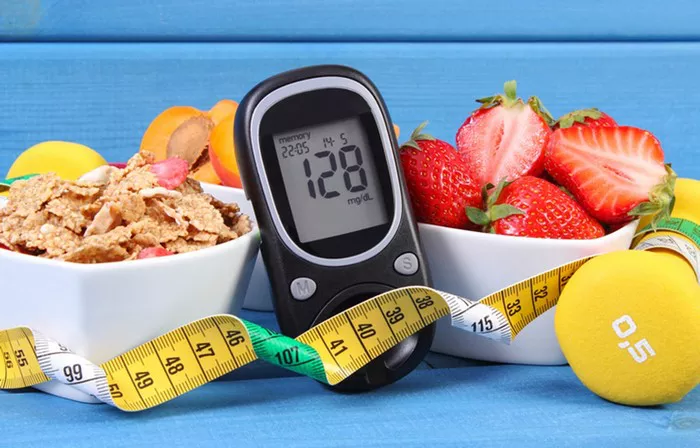Nocturnal hypoglycemia, or low blood sugar at night, is a common concern for people with diabetes. It can be a distressing and dangerous condition, leading to poor sleep quality and increasing the risk of severe hypoglycemic events. Understanding the dietary strategies to prevent nocturnal hypoglycemia is essential for maintaining stable blood sugar levels and ensuring a good night’s sleep. This article explores the types of foods and dietary practices that can help prevent low blood sugar at night.
Understanding Nocturnal Hypoglycemia
Nocturnal hypoglycemia occurs when blood glucose levels drop below 70 mg/dL during sleep. Symptoms can range from mild (sweating, nightmares, and restlessness) to severe (seizures, confusion, and even unconsciousness). For individuals with diabetes, maintaining blood glucose levels within a target range overnight is crucial to prevent these episodes.
Factors Contributing to Nocturnal Hypoglycemia
Several factors can contribute to nocturnal hypoglycemia, including:
- Insulin and Medication: Taking too much insulin or diabetes medication before bedtime can lead to low blood sugar levels during the night.
- Inadequate Evening Meals: Skipping dinner or not consuming enough carbohydrates in the evening can result in depleted glycogen stores, leading to hypoglycemia.
- Increased Physical Activity: Exercise can increase insulin sensitivity and glucose uptake, lowering blood sugar levels, especially if performed in the evening without adequate carbohydrate intake.
- Alcohol Consumption: Alcohol can interfere with the liver’s ability to release glucose, increasing the risk of hypoglycemia.
Dietary Strategies to Prevent Nocturnal Hypoglycemia
Preventing nocturnal hypoglycemia involves a combination of appropriate food choices and timing of meals and snacks. Here are some strategies to consider:
1. Balanced Evening Meals
A balanced dinner that includes carbohydrates, proteins, and healthy fats is essential for preventing nocturnal hypoglycemia. Carbohydrates provide immediate energy, while proteins and fats slow down digestion, leading to a more sustained release of glucose into the bloodstream.
Carbohydrates: Choose complex carbohydrates like whole grains, vegetables, and legumes, which are digested more slowly than simple sugars. Examples include brown rice, quinoa, sweet potatoes, and whole wheat pasta.
Proteins: Include lean proteins such as chicken, turkey, tofu, beans, and low-fat dairy products. These help to maintain satiety and stabilize blood sugar levels.
Fats: Healthy fats, such as those found in avocados, nuts, seeds, and olive oil, can help slow down the absorption of carbohydrates.
2. Bedtime Snacks
A small, well-planned bedtime snack can help prevent blood sugar levels from dropping too low during the night. The ideal snack should include a combination of carbohydrates and proteins to ensure a gradual release of glucose.
Examples of Bedtime Snacks:
- A slice of whole-grain bread with peanut butter
- Greek yogurt with a small handful of berries
- A small apple with a piece of cheese
- A handful of nuts with a few whole-grain crackers
3. Fiber-Rich Foods
Fiber slows down the digestion and absorption of carbohydrates, helping to maintain stable blood sugar levels. Including fiber-rich foods in your evening meals and snacks can be beneficial.
Sources of Fiber: Vegetables (especially leafy greens), fruits (with the skin), whole grains, legumes, and seeds.
4. Low-Glycemic Index (GI) Foods
Low-GI foods are absorbed more slowly and cause a gradual rise in blood sugar levels. Incorporating these foods into your diet can help prevent nocturnal hypoglycemia.
Low-GI Foods: Lentils, chickpeas, beans, oats, barley, non-starchy vegetables, and most fruits.
5. Avoiding High-Sugar Foods Before Bed
High-sugar foods can cause a rapid spike in blood glucose levels followed by a sharp decline, increasing the risk of hypoglycemia. Avoid consuming sugary snacks, desserts, and beverages close to bedtime.
Personalized Meal Planning
Each individual’s response to food can vary, so personalized meal planning is crucial. Working with a registered dietitian or diabetes educator can help tailor dietary strategies to meet specific needs and preferences.
1. Monitoring Blood Sugar Levels
Regularly monitoring blood sugar levels, especially before bed and during the night, can help identify patterns and prevent hypoglycemic episodes. Continuous glucose monitors (CGMs) can provide real-time data and alerts, making it easier to manage blood sugar levels.
2. Adjusting Insulin and Medications
Discuss with your healthcare provider about adjusting insulin doses or medication timings to prevent nocturnal hypoglycemia. They can help find the right balance to maintain stable blood glucose levels overnight.
Practical Tips for Nighttime Blood Sugar Management
Here are some additional practical tips to help manage blood sugar levels overnight:
1. Consistent Meal Times
Eating meals and snacks at consistent times can help regulate blood sugar levels. Try to have dinner and bedtime snacks at the same time each day.
2. Hydration
Staying hydrated is important for overall health and can help maintain blood sugar balance. Drink plenty of water throughout the day, but avoid excessive fluid intake right before bed to prevent interruptions in sleep.
3. Alcohol Moderation
If you choose to drink alcohol, do so in moderation and always with food. Alcohol can lower blood sugar levels, so it’s important to monitor your glucose levels closely if you consume alcoholic beverages in the evening.
4. Avoiding Strenuous Exercise Late in the Day
While regular physical activity is beneficial for blood sugar control, exercising too close to bedtime can increase the risk of nocturnal hypoglycemia. Aim to complete your workouts at least a few hours before going to bed.
Foods to Include in Your Diet
Here are some specific foods that can help prevent low blood sugar at night:
1. Whole Grains
Whole grains like oats, brown rice, quinoa, and barley are excellent sources of complex carbohydrates and fiber. They provide a steady release of glucose, helping to maintain stable blood sugar levels.
Examples:
- Oatmeal with a spoonful of almond butter
- Quinoa salad with vegetables and a protein source
- Brown rice stir-fry with lean meat and vegetables
2. Legumes
Legumes, including beans, lentils, and chickpeas, are rich in protein, fiber, and complex carbohydrates. They have a low glycemic index and help to stabilize blood sugar levels.
Examples:
- Lentil soup
- Chickpea salad with olive oil and lemon dressing
- Black beans with brown rice and salsa
3. Non-Starchy Vegetables
Non-starchy vegetables like broccoli, spinach, kale, and peppers are low in carbohydrates but high in fiber and essential nutrients. They can be included in meals without significantly impacting blood sugar levels.
Examples:
- Steamed broccoli with a sprinkle of cheese
- Spinach salad with grilled chicken and a vinaigrette
- Roasted bell peppers with quinoa and black beans
4. Nuts and Seeds
Nuts and seeds are great sources of healthy fats, protein, and fiber. They can help slow down the digestion of carbohydrates and prevent rapid spikes and drops in blood sugar levels.
Examples:
- A handful of almonds or walnuts
- Chia seed pudding made with unsweetened almond milk
- Flaxseed added to yogurt or oatmeal
5. Low-Fat Dairy
Low-fat dairy products like Greek yogurt, cottage cheese, and milk provide protein and calcium. They can be a good choice for a bedtime snack to help maintain blood sugar levels overnight.
Examples:
- Greek yogurt with a few slices of fruit
- Cottage cheese with cucumber slices
- A small glass of low-fat milk
Foods to Avoid
Certain foods can increase the risk of nocturnal hypoglycemia and should be limited or avoided:
1. Sugary Snacks and Desserts
Sugary snacks and desserts can cause rapid spikes and subsequent drops in blood sugar levels. Avoid candies, cookies, cakes, and sugary beverages close to bedtime.
2. Refined Carbohydrates
Refined carbohydrates like white bread, pasta, and pastries are quickly digested and can lead to fluctuations in blood sugar levels. Opt for whole grain versions instead.
3. High-Fat Meals
High-fat meals, especially those rich in saturated and trans fats, can interfere with insulin sensitivity and slow down digestion. Avoid greasy, fried foods and opt for healthier fat sources.
Conclusion
Managing nocturnal hypoglycemia requires a strategic approach to diet and lifestyle. By choosing balanced meals, incorporating fiber-rich and low-GI foods, and planning appropriate bedtime snacks, individuals with diabetes can maintain stable blood sugar levels and reduce the risk of hypoglycemia at night. Personalized meal planning, regular monitoring, and consultation with healthcare providers are key to successfully preventing nocturnal hypoglycemia and ensuring a restful night’s sleep.
Related topics:
What Should I Eat to Raise My Blood Sugar?























